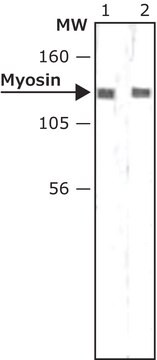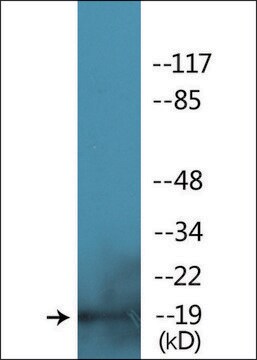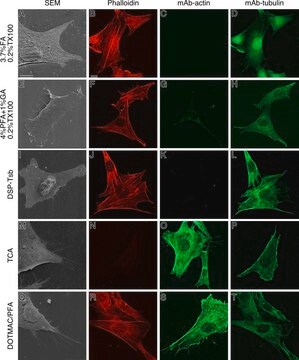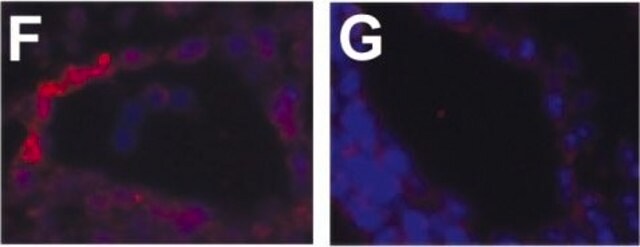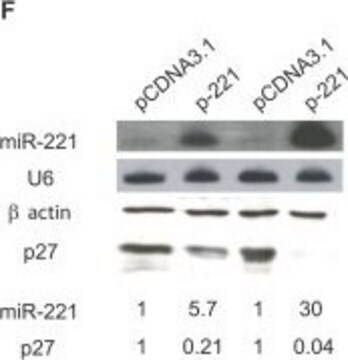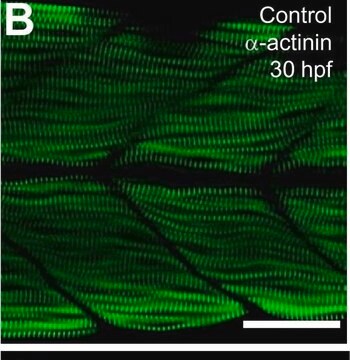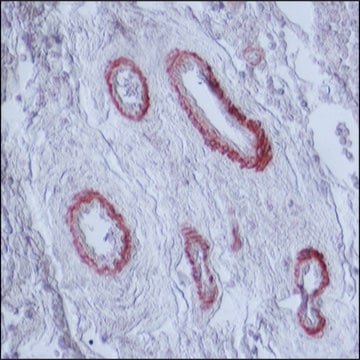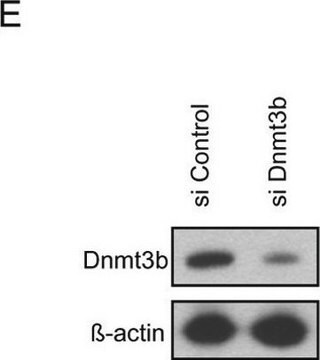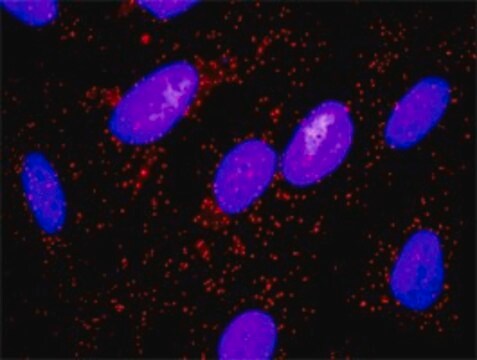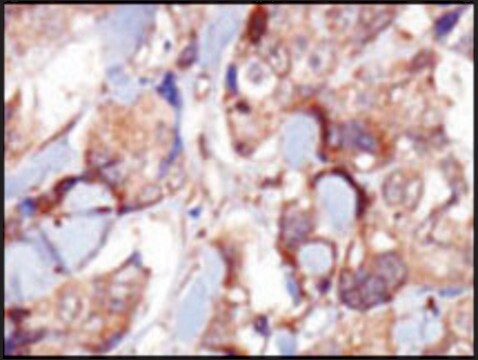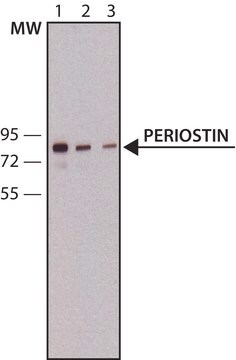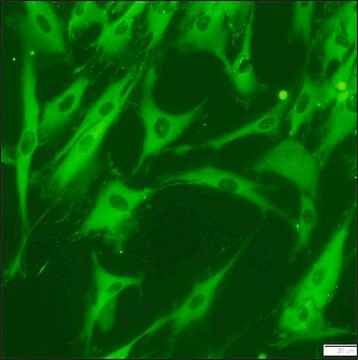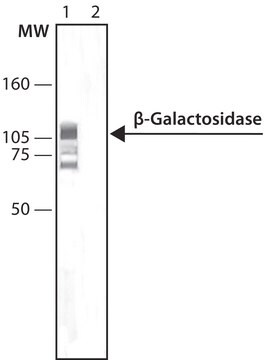M4401
Monoclonal Anti-Myosin (Light Chains 20 kDa) antibody produced in mouse
clone MY-21, ascites fluid
Sinónimos:
Myosin Light Chain Antibody, Myosin Light Chain Antibody - Monoclonal Anti-Myosin (Light Chains 20 kDa) antibody produced in mouse
About This Item
Productos recomendados
origen biológico
mouse
Nivel de calidad
conjugado
unconjugated
forma del anticuerpo
ascites fluid
tipo de anticuerpo
primary antibodies
clon
MY-21, monoclonal
mol peso
antigen 20 kDa
contiene
15 mM sodium azide
reactividad de especies
human, chicken, pig, bovine, rabbit
técnicas
indirect immunofluorescence: 1:200 using human or chicken fibroblasts
western blot: suitable using denatured and reduced myosin of muscle
isotipo
IgM
Nº de acceso UniProt
Condiciones de envío
dry ice
temp. de almacenamiento
−20°C
modificación del objetivo postraduccional
unmodified
Información sobre el gen
chicken ... MYLK2(396356)
human ... MYLK2(85366)
Descripción general
Especificidad
Inmunógeno
Aplicación
- western blot analysis
- fluorescence immunohistochemistry
- confocal microscopy
Acciones bioquímicas o fisiológicas
Forma física
Almacenamiento y estabilidad
Cláusula de descargo de responsabilidad
¿No encuentra el producto adecuado?
Pruebe nuestro Herramienta de selección de productos.
Código de clase de almacenamiento
10 - Combustible liquids
Clase de riesgo para el agua (WGK)
nwg
Punto de inflamabilidad (°F)
Not applicable
Punto de inflamabilidad (°C)
Not applicable
Elija entre una de las versiones más recientes:
¿Ya tiene este producto?
Encuentre la documentación para los productos que ha comprado recientemente en la Biblioteca de documentos.
Los clientes también vieron
Nuestro equipo de científicos tiene experiencia en todas las áreas de investigación: Ciencias de la vida, Ciencia de los materiales, Síntesis química, Cromatografía, Analítica y muchas otras.
Póngase en contacto con el Servicio técnico